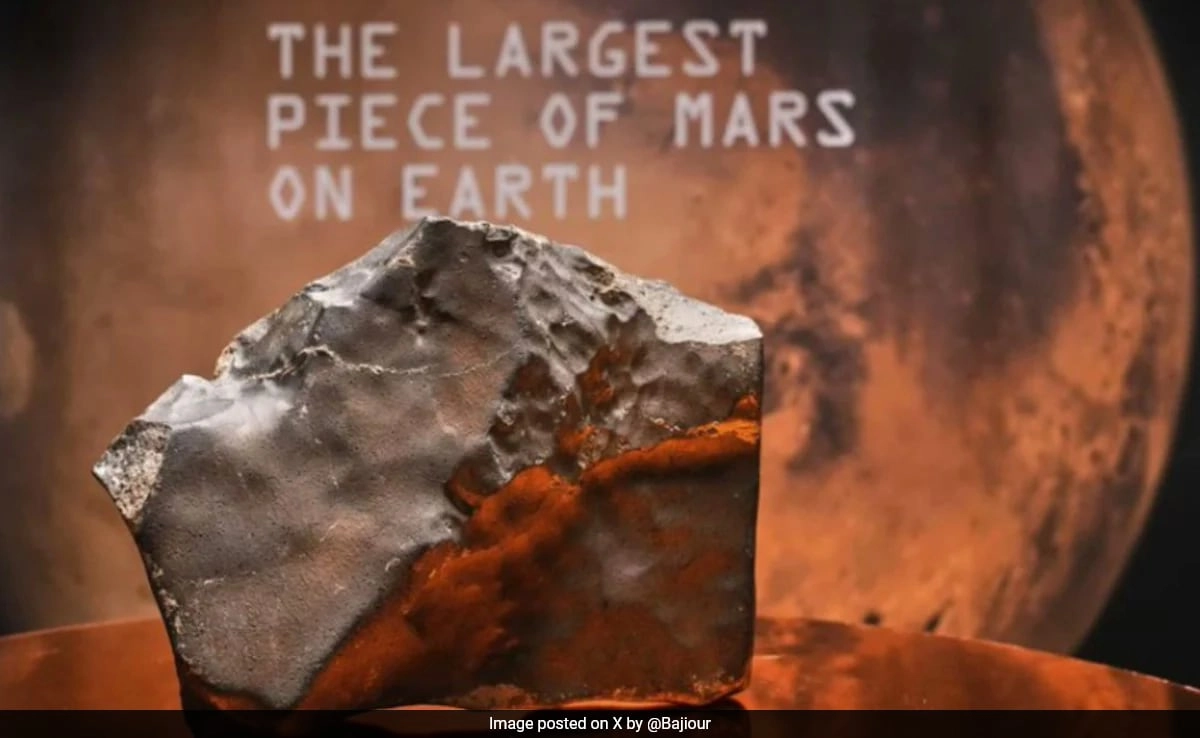In a recent extraordinary auction, the largest known piece of Mars ever sold fetched an impressive $5.3 million. This meteorite, known as the “Tissint” meteorite, weighs approximately 7.6 kilograms and is believed to have originated from the Red Planet around 700,000 years ago. The piece was discovered in Morocco in 2011, and since then, it has fascinated scientists and collectors alike due to its unique composition and the insights it may provide into the geological history of Mars. The sale of this remarkable specimen underscores the growing interest in extraterrestrial materials and their potential to deepen our understanding of the universe.
However, amidst the excitement surrounding the Martian meteorite, it was a young dinosaur skeleton, also auctioned off, that captured the attention and admiration of many attendees. This dinosaur, a rare find, belonged to a species believed to have roamed the Earth approximately 75 million years ago. The fossilized remains were remarkably well-preserved, showcasing the intricate details of its skeletal structure. The auction of this dinosaur skeleton not only highlights the fascination with prehistoric life but also reflects the increasing market for dinosaur fossils, which have become highly sought after by collectors and museums alike.
The juxtaposition of the Martian meteorite and the dinosaur skeleton at the auction illustrates a broader trend in the collecting world, where both extraterrestrial and prehistoric artifacts are gaining prominence. Collectors are drawn to these items not only for their monetary value but also for the stories they tell about the history of our planet and beyond. The sale of the Mars meteorite signifies humanity’s ongoing quest to explore and understand other worlds, while the young dinosaur skeleton serves as a reminder of the rich tapestry of life that once existed on Earth. Together, these sales reflect the diverse interests of collectors and the enduring allure of artifacts that bridge the gap between time and space.




